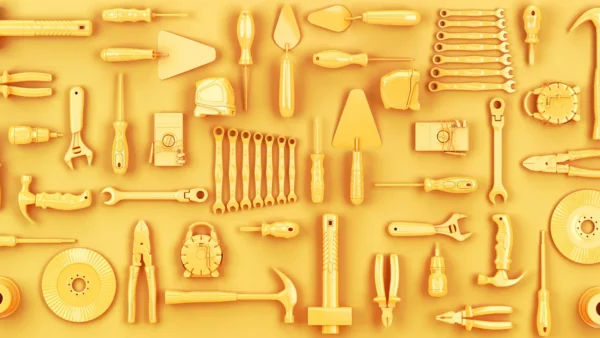As a carpenter, you may be subcontracted at various stages of a construction or renovation project to complete a number of different jobs, including building concrete forms, framing, installing doors and windows, and installing cabinets. You and your employees are skilled tradespeople with a commitment to do the job right.
But what happens when a job doesn’t go quite right? Every trade has its risks. Do you know what the big risks are for your carpentry business? To help you better understand your business insurance needs, we asked a contractors insurance expert at one of our business insurance company partners to give us the lowdown on the most common claims for carpentry businesses. Here’s what she told us…
1. Stolen tools
Certain trades have tools that are in high demand on the black market. Carpentry is one of them. You may look at your old hammers, tape measures, drills and power saws and think that nobody would want them, but you would be 100% wrong. By far the most common type of insurance claim made by carpenters is for stolen tools.
2. Water damage from stray screws
Another common type of claim for carpenters is water damage claims that arise when screws or nails accidentally hit plumbing in the wall and cause a leak. This kind of claim is mostly related to installing cabinetry, when walls are typically already drywalled, and your team can’t know exactly what is behind the wall and where.
There can be similar claims for hitting wiring as well, which can cause a fire. Plumbing is more complicated, because sometimes nobody will know there’s a problem for months after the job is completed. The screw punches a hole in a pipe, but then seals it, and the leak comes only after rust sets in.
Common claim scenario
Your team is subcontracted to install kitchen and bathroom cabinets as part of a residential build. Unbeknownst to you, your apprentice misses the stud when trying to affix a cabinet to the wall. The lights flicker, but she thinks nothing of it at the time. Later, the breaker goes, and another tradesperson working on site smells smoke. It becomes clear that there’s a short in the wall, and the insulation is smoldering, and creating thick smoke.
To be safe, the site is evacuated and the fire department is called. They have to remove all the cabinets and a section of the wall to make sure the fire is out. The worksite is shut down for the day to let the smoke clear, and a cleaning crew is contracted to thoroughly clean the property to get rid of the smoke smell.
- Cost of calling the fire department: $1,850
- Cost of cleaning: $950
- Cost of lost day of work: $5,800
- Cost of rework: $1,650
- Total claim: $10,250
Tips for avoiding claims
Insurance exists precisely because you can never completely eliminate the risk of something going wrong. That said, the more you can do to prevent having to make claims, the happier your customers will be, and the more affordable your insurance premiums will be. There are some common sense measures that your business can take to reduce the risk of claims.
Worksites are often littered with tools. A number of different trades will be working at the same site at any given time, and workers are constantly coming and going. This is to a large degree the reason why so many tools are lost or stolen. To keep your tools safe, train your staff to keep any tools they’re not currently using in a locked truck. Also, never leave tools lying around at a worksite overnight if you can help it.
Errant screws or nails are going to happen, but again, train your team to take the right steps when they suspect a screw hit anything but a stud. That means, pull the screw back out right away. If there’s a problem, like you hit a pipe, at least you’ll see right away if there’s a leak, and you can shut off the water and limit the damage.
Carpenters insurance usually includes coverage for:
- General Liability (coverage required by all businesses, to protect against lawsuits) Learn more
- Tools and Equipment (pays to replace your tools if they are stolen, damaged or destroyed) Learn more
Other coverage to consider:
- Business Auto Insurance – Any car or truck owned by the business needs commercial auto insurance coverage. On the other hand, if you use your personal vehicle to get to and from job sites, you should talk to your broker about whether your personal auto insurance policy is sufficient. Don’t assume. You may end up voiding your coverage.
- Business Property Insurance – You only need a property insurance policy if you have an office or shop. If you work out of your home, ask your home insurance provider if you need additional coverage for business-related contents like tools or supplies. If you have a separate workshop at your home where you undertake substantial operations, you may require a separate property policy as your home insurance may not provide cover.
- Installation Floater – protects equipment and stock which is lost or damaged in transit to, or at your worksite before it is permanently installed or fitted. You may consider this coverage if you install a lot of high-end doors, windows and cabinets.
[Our thanks to Joanne Carmody from Travelers Canada, one of our trusted contractors insurance partners, who agreed to share her expertise for this piece.]
Looking for contractor insurance?
Speak with a Mitch Insurance broker today to get a quote on Ontario contractor insurance. Learn more >
Call now
1-800-731-2228








Great insights on avoiding common carpenter’s insurance claims! Your tips are practical and will undoubtedly help many professionals in the industry safeguard their work. Thanks for sharing such valuable information to enhance our understanding of insurance needs